The food detectives attend a dioxins conference, determine dioxins in fish
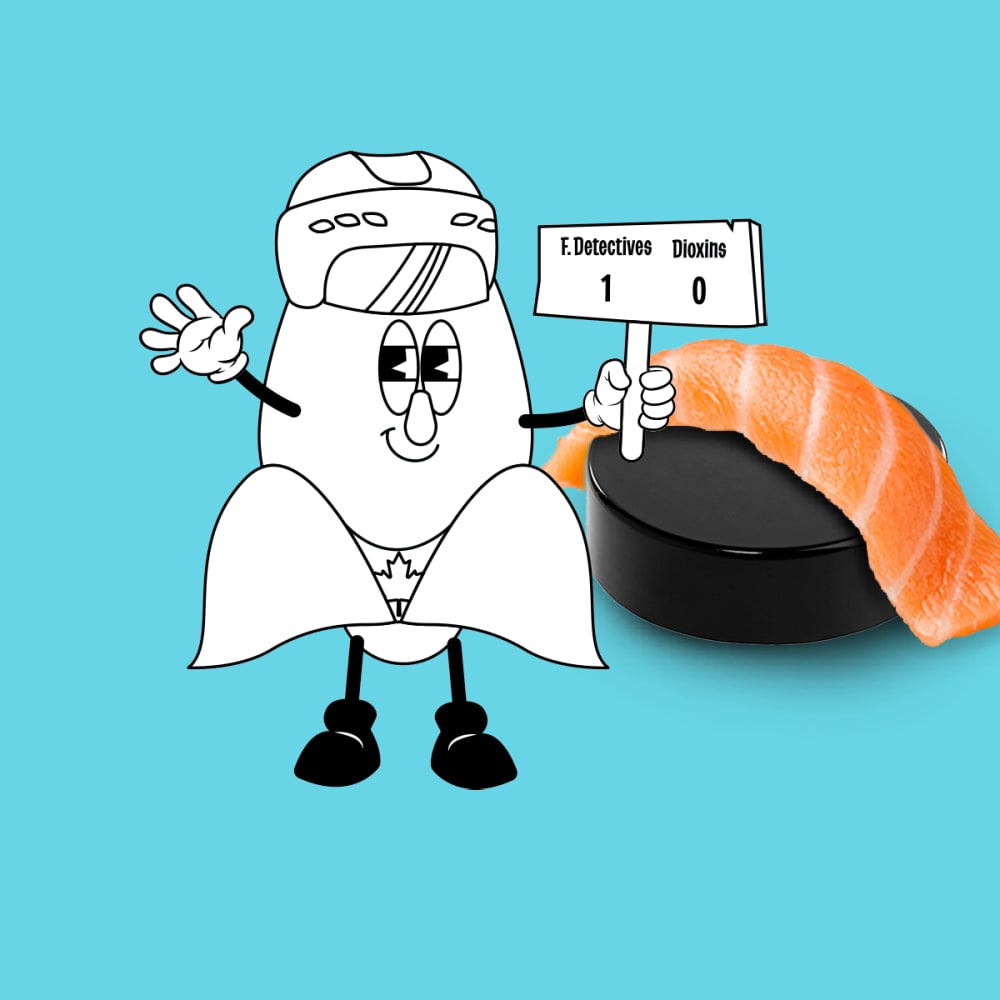
Chapter 39
? Case overview: The food detectives celebrate an important milestone by going to a dioxin conference. But things get really fishy afterwards. For them, this might be a good thing, as they get engaged in a case of determination of dioxins in fish. Do they manage to hook their client onto their proposal, or will she swim away to foreign waters? Read on to find out.
Shallot Holmes gathers his team and admits red-faced that although the bureau has been open for more than a year, they never properly celebrated their first anniversary. To immediately amend this mistake, he is inviting his colleagues to a dioxins conference! The food detectives enthusiastically jump up and are off to pack up for the event.
They spend the next few days emerged in scientific talks on halogenated persistent organic pollutants, fluorinated compounds, microplastics, brominated flame retardants and others. Once they get back to their office, they summarize their discussions. Lieutenant Cornlumbo is particularly excited to share his lively interaction with an attendee interested in determining dioxins in fish. The woman, a biologist and environmental scientist, was so interested in Lieutenant Cornlumbo’s thoughts and approach, that she has asked the food detectives help her develop a method to determine dioxins in fish.
It is not the first time the food detectives try to fight dioxins. And since Lieutenant Cornlumbo has already established contact with the client, he also gets to head the case.
He watches a quick webinar on dioxin determination in food and environmental samples, reads up on high throughput extraction for dioxin analysis and gathers his team to discuss how to help the client further.
Since they’ve already covered this topic, he gives the food detectives only a brief overview of dioxins. These compounds are classified as persistent environmental pollutants, found throughout the environment, and accumulating in the food chain, mainly in the fatty tissue of animals. Their half-life in the human body is estimated to be seven to eleven years.
“Dioxins” is an umbrella term for the family of structurally and chemically related polychlorinated dibenzo-para-dioxins (PCDDs), polychlorinated dibenzofurans (PCDFs) and dioxin-like polychlorinated biphenyls (dl-PCBs). There are 419 dioxin-related compounds identified so far, with 30 of these considered as significantly toxic.
But, Lieutenant Cornlumbo points out, the complex nature of PCDDs, PCDFs and PCBs complicate the risk evaluation for humans. To address this, the concept of toxic equivalency factors (TEFs) has been developed. TEF values for individual congeners in combination with their concentration are used to calculate toxic equivalent concentrations (TEQs).
After this general overview, the food detectives focus on the particular case at hand, dioxins in fish. Dioxins tend to accumulate in the fat tissue of fish. The fat content of fish depends on the species and changes during the year, where typically fish have lower fat content in spring than fall. The concentration of dioxins in fish is usually expressed in two different ways. For the calculation of the exposure of a population, the daily intake is calculated by using the dioxin content in relation to the fresh weight of a fish. For the calculation of the contamination of a water body by the dioxin concentration in the fat of the fish is used. The concentration in the fat is usually comparable for different species.
Lieutenant Cornlumbo proceeds to outline his experimental strategy for determination of dioxins in fish. Firstly, they need to extract the fat, and then determine dioxins in fish from the fat fraction. They can use the amount of fat extracted from the fish to calculate the fat content of the fish tissue. He notes that a traditional Soxhlet extraction method requires extraction times of 18 to 24 hours, but he has a proposal for how to speed things up for the client trying to determine dioxins in fish.
Getting even more specific, Lieutenant Cornlumbo suggests using a pressurized solvent extraction system to quickly extract and determine PCDDs, PCDFs, dl-PCBs and ndl-PCBs (non-toxic PCBs) in European trout (estimated fat content 2-3%), European eel (estimated fat content 20-30%) and a consensus material (trout with estimated fat content 4.8 % +/- 1.1 %). The others are satisfied with his idea and spring into action.
To determine dioxins in fish, the food detectives go through the following steps:
- Sample preparation
- Sample extraction using pressurized solvent extraction or Soxhlet extraction
- Determination of fat content
- Clean-up of the fat fraction
- Qualification and quantification by GC-HRMS
They start with the trout and eel sample: each fish is disemboweled, boned, scaled and washed. They pool together 4 individual trout fishes, for the eel sample, they use only one. Then, they freeze dry all fish tissue samples. The trout reference material is a wet fish tissue homogenate, which they need to freeze dry prior to extraction.
To prepare their samples for extraction, they weight 10 g eel and 20 g trout of freeze-dried tissue material, add PCCD/F and PCB-extraction and -quantification standards and mix in diatomaceous earth. They also prepare blanks consisting of only PCDD/F- and PCB extraction and –quantification standards and diatomaceous earth.
They extract the eel and trout samples in triplicate and the reference material in a single extraction. The total time for their pressurized solvent extraction process is a little over 1 hour. In parallel, the food detectives also perform Soxhlet extraction, the process takes 16 hours.
Following the extraction process, the food detectives evaporate the solventof their samples with a parallel evaporator. They determine the sample’s fat fraction gravimetrically by weight the vessel containing the residue of the raw extract after drying. They calculate the fat content with the following formula:
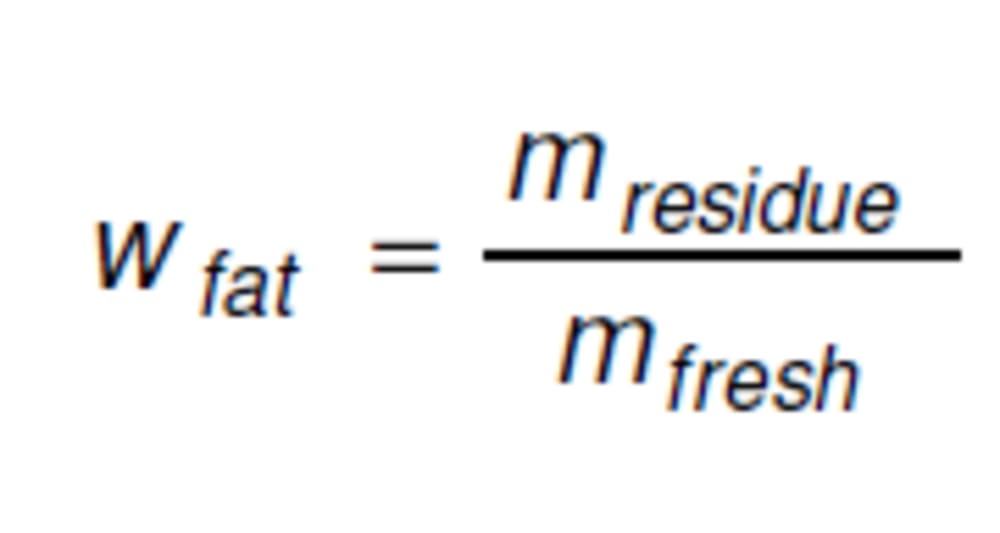
Where mresidue: weight of the residue
mfresh: weight of the fresh fish tissue
wfat: weight fraction of the fat in g/g
The food detectives go on to perform liquid solid chromatography for sample clean-up of the fat extract and fractionation of PCDD/Fs and PCBs for separate HRMS analysis. They fractionate PCDD/Fs by appropriate elution of the basic alumina column and the PCB fraction by means of a silica column prior to HRMS analysis.
Lieutenant Cornlumbo dedicates some time to results analysis and produces the following figures.
For the analysis of PCDD and PCDFs as dioxins in fish:

And then in more detail for PCDD/Fs congeners:
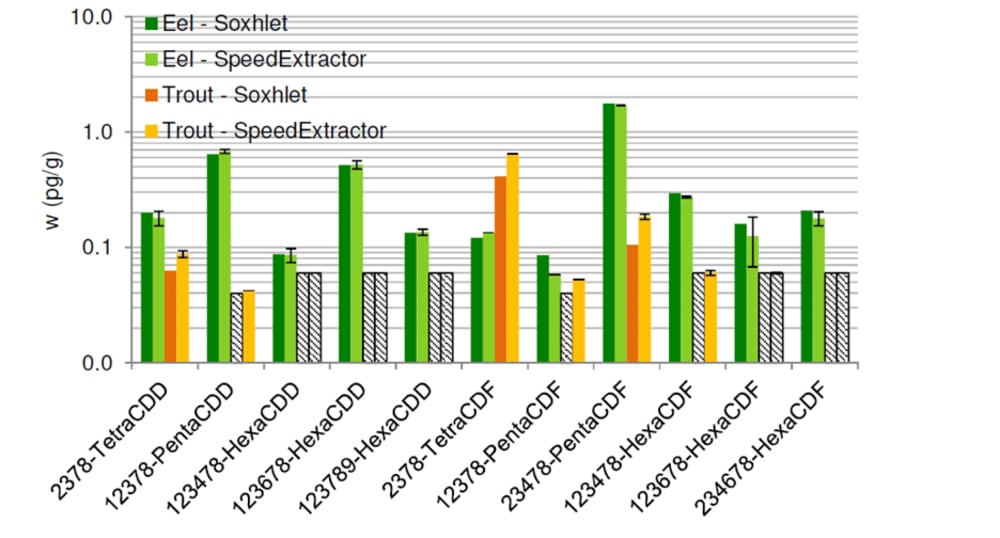
And the dl-PCBs:
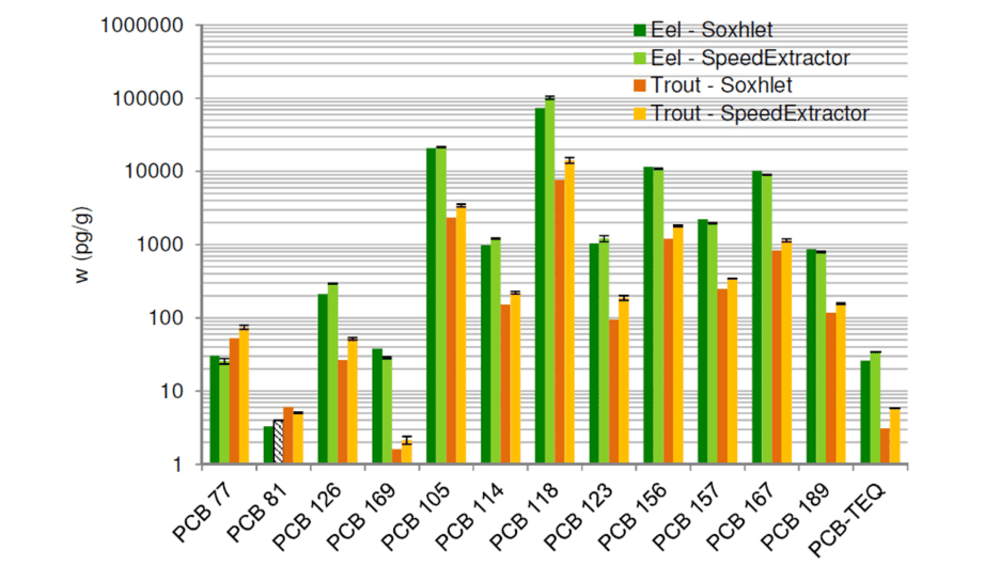
And ndl-PCBs:
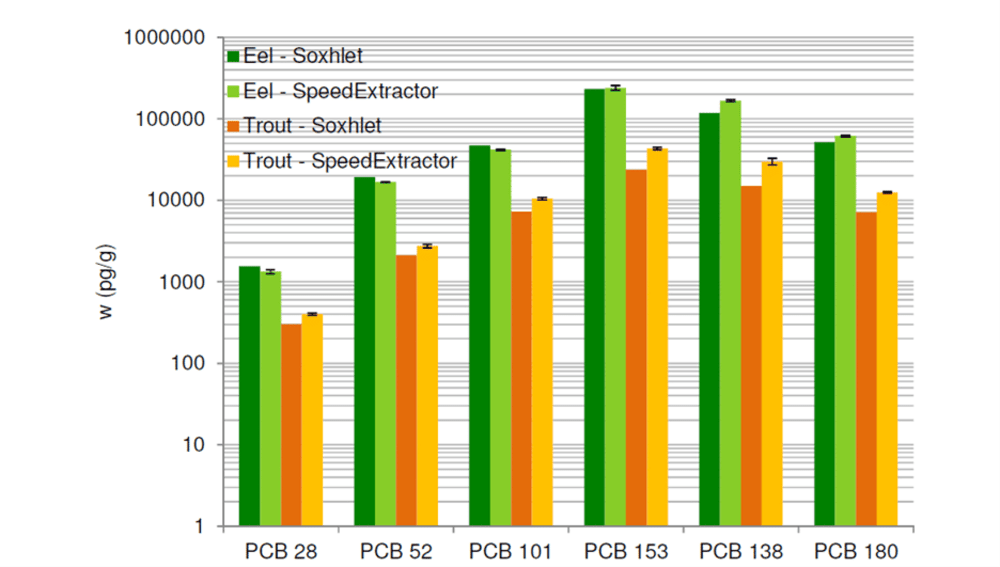
The food detectives summarize their findings for the client. Their methods had excellent comparability to the consensus results and good comparability for the trout and eel samples. As the material was prepared from frozen sample material and not directly homogenized beforehand, the food detectives and the client find slight differences in the results acceptable. The client is especially impressed that the pressurized solvent extraction system is 10 times faster than traditional extraction. She is happy to adopt this method for determination of dioxins in fish.
As a thank you, the client goes fishing with the food detectives. The team is grateful for the peace, quiet and excitement of the activity and gain more appreciation of trout than as a sample or a yummy dish. They vow to do more to learn about food sources in the future. Will they? Time will tell.
